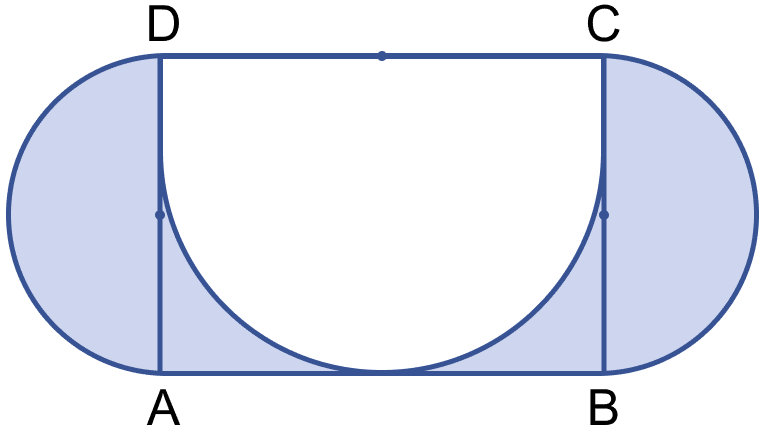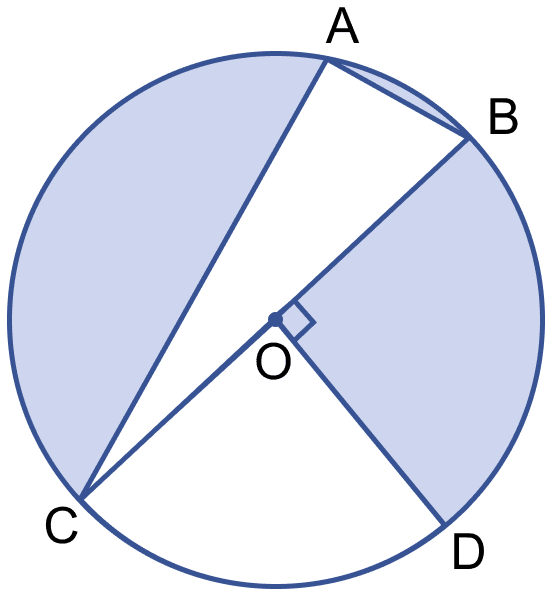Mathematics
In the figure (i) given below, ABCD is a rectangle, AB = 14 cm and BC = 7 cm. Taking DC, BC and AD as diameters, three semicircles are drawn as shown in the figure. Find the area of the shaded portion.

Mensuration
7 Likes
Answer
Since, ABCD is a rectangle.
AD = BC = 7 cm.
CD = AB = 14 cm.
From figure,
AD and BC are diameters of smaller circles.
Radius = = 3.5 cm.
Area of each small semi-circle =
=
= 19.25 cm2.
From figure,
CD is the diameter of the larger semi-circle.
Radius = = 7 cm.
Area of larger semi-circle =
=
= 77 cm2.
Area of rectangle ABCD = AB × BC
= 14 × 7
= 98 cm2.
From figure,
Area of shaded region = Area of rectangle ABCD + 2 × Area of each smaller semi-circle - Area of larger semi-circle
= 98 + (2 × 19.25) - 77
= 98 + 38.5 - 77
= 59.5 cm2.
Hence, area of shaded region = 59.5 cm2.
Answered By
5 Likes
Related Questions
In the figure (i) given below, two circular flower beds have been shown on the two sides of a square lawn ABCD of side 56 m. If the centre of each circular flower bed is the point of intersection O of the diagonals of the square lawn, find the sum of the areas of the lawn and the flower beds.

In the figure (ii) given below, O is the centre of a circle with AC = 24 cm, AB = 7 cm and ∠BOD = 90°. Find the area of the shaded region. (Use π = 3.14)

In the figure (i) given below, ABCD is a square of side 14 cm. A, B, C and D are centres of the equal circles which touch externally in pairs. Find the area of the shaded region.

In the figure (ii) given below, a square OABC is inscribed in a quadrant OPBQ of a circle. If OA = 20 cm, find the area of the shaded region. (π = 3.14)
